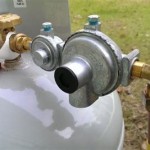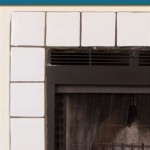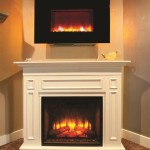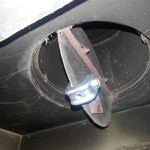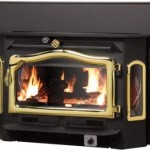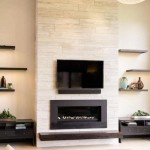The Allure and Considerations of Mounting a TV Above a Fireplace
Mounting a television above a fireplace is a popular design choice, offering a visually appealing focal point in a living space. This configuration consolidates entertainment and ambiance, creating a cozy and modern atmosphere. However, before embarking on this project, careful consideration should be given to various factors, including safety, ergonomics, and aesthetic impact.
The appeal of combining a television and fireplace stems from the desire to maximize space and create a central hub for relaxation and entertainment. In smaller homes or apartments, this arrangement can free up valuable wall space and streamline the layout. Furthermore, the fireplace often serves as a natural focal point, making it a logical location for the television.
Despite these advantages, successfully mounting a television above a fireplace requires meticulous planning and execution. Failure to address potential challenges can lead to discomfort, damage to equipment, or even safety hazards. Therefore, a thorough understanding of the involved steps and considerations is crucial.
Heat Management is Paramount
One of the primary concerns when mounting a television above a fireplace is heat exposure. Fireplaces, especially traditional wood-burning ones, generate substantial heat that can damage sensitive electronic components within the television. Excessive heat can lead to overheating, screen discoloration, reduced lifespan, and, in extreme cases, complete failure of the television.
The amount of heat reaching the television depends on several factors, including the type of fireplace, the distance between the fireplace and the television, and the presence of a mantel. Gas fireplaces generally produce less heat than wood-burning fireplaces, making them a slightly less risky option. However, even with a gas fireplace, precautions should be taken to minimize heat exposure.
A well-designed mantel can act as a heat shield, deflecting rising heat away from the television. The deeper the mantel, the more effective it will be in protecting the television. Consider installing a custom-built mantel that extends sufficiently to provide adequate heat protection. The recommended depth varies depending on the fireplace type and heat output, but a minimum of eight inches is generally advisable.
Furthermore, the distance between the top of the fireplace and the bottom of the television should be maximized. Increasing this distance provides more opportunity for the heat to dissipate before reaching the television. A minimum distance of 12 inches is generally recommended, but more is preferable whenever possible. Consider using a wall mount that allows for adjustable height to fine-tune the television's position.
Installing a temperature sensor near the television can provide valuable data on the heat levels. These sensors can be configured to send alerts if the temperature exceeds a safe threshold, allowing for timely intervention, such as reducing the fire's intensity or turning off the television. Continuous monitoring is essential, especially during prolonged use of the fireplace.
If using a wood-burning fireplace, consider installing a fireplace insert with a sealed combustion chamber. These inserts are designed to direct heat more efficiently into the room, minimizing heat loss and reducing the temperature above the fireplace. Consult with a qualified fireplace installer to determine the best insert for the specific fireplace and television setup.
Ventilation is also crucial for dissipating heat. Ensure adequate airflow around the television by avoiding enclosed cabinets or tight spaces. Consider installing vents or fans to promote air circulation and prevent heat buildup. Regular cleaning of the fireplace and chimney is also essential to maintain efficient airflow and prevent creosote buildup, which can increase the risk of fire and heat damage.
Ergonomic Considerations for Comfortable Viewing
Beyond heat concerns, the viewing angle of the television is another critical factor to consider. Mounting a television too high can result in neck strain and discomfort, especially during prolonged viewing sessions. The ideal viewing angle places the center of the television screen at or slightly below eye level when seated.
The height of the fireplace often dictates the television's mounting height, which can deviate significantly from the optimal viewing angle. To mitigate this issue, consider using a tilting wall mount. A tilting mount allows the television to be angled downward, compensating for the elevated position and improving the viewing angle. Adjust the tilt angle carefully to achieve the most comfortable viewing position.
The size of the television also influences the optimal viewing distance. A larger television requires a greater viewing distance to avoid visual strain. Use online calculators or consult with an audio-visual specialist to determine the appropriate viewing distance for the chosen television size. Adjust the seating arrangement accordingly to ensure a comfortable and immersive viewing experience.
Consider using a full-motion wall mount to provide maximum flexibility. These mounts allow the television to be swiveled, tilted, and extended, providing optimal viewing angles from various locations in the room. This is particularly useful in rooms with multiple seating areas or where the television needs to be adjusted for different activities.
Evaluate the room's lighting conditions. Glare from windows or artificial light sources can impair the viewing experience. Consider installing blinds or curtains to control the amount of light entering the room. Adjust the television's brightness and contrast settings to optimize visibility in different lighting conditions. Anti-glare screens can also be effective in reducing reflections.
Regularly assess the viewing comfort and make adjustments as needed. Pay attention to any signs of neck strain or eye fatigue. Re-evaluate the television's height, tilt angle, and viewing distance. Small adjustments can make a significant difference in overall viewing comfort.
Aesthetic Integration and Installation Best Practices
The visual integration of the television and fireplace is crucial for achieving a cohesive and aesthetically pleasing design. The television should complement the fireplace and surrounding décor, rather than appearing as an afterthought. Careful attention to detail is essential for creating a harmonious and balanced look.
Consider concealing the television cords and cables. Exposed cables can detract from the overall aesthetic and create a cluttered appearance. Use cable management sleeves or in-wall wiring to hide the cables and create a clean and professional look. Ensure that the cables are properly secured and protected from heat exposure.
Choose a wall mount that complements the style of the fireplace and the surrounding décor. There are various types of wall mounts available, ranging from minimalist designs to more ornate options. Select a mount that blends seamlessly with the existing aesthetic and does not detract from the overall design.
Consider incorporating decorative elements to balance the visual weight of the television and fireplace. Artwork, shelving, or decorative accessories can help to create a more balanced and visually appealing composition. Arrange these elements strategically to draw the eye away from the television when it is not in use.
Professional installation is highly recommended. Mounting a television above a fireplace involves working with electrical wiring, structural supports, and potentially fragile materials. A professional installer has the expertise and equipment to ensure a safe and secure installation. They can also advise on the best mounting options and cable management solutions.
Ensure that the wall behind the fireplace is structurally sound and capable of supporting the weight of the television and the wall mount. Consult with a structural engineer if there are any concerns about the wall's load-bearing capacity. Reinforce the wall if necessary to provide adequate support.
Consider the placement of other electronic devices. Avoid placing sensitive electronic equipment directly above the fireplace, as they may be susceptible to heat damage. Locate these devices in a separate location or use a heat-resistant enclosure to protect them from excessive heat.
Regularly inspect the television and the wall mount for any signs of damage or instability. Check the cables for wear and tear. Tighten any loose screws or bolts. Address any issues promptly to prevent potential safety hazards.
Ultimately, mounting a television above a fireplace can be a rewarding project that enhances the aesthetic appeal and functionality of a living space. By carefully considering the factors of heat management, ergonomics, and aesthetic integration, one can create a comfortable, safe, and visually pleasing entertainment center.

Can I Mount My Tv Above The Fireplace

3 Tips For Installing A Tv Over Your Fireplace

Safely Mount A Tv Above An Electric Fireplace Touchstone Home S Inc

Is It Safe To Mount Your Tv Above The Fireplace Chimney And Wildlife

How To Mount A Tv Over The Fireplacebeautifully Old Barn

Putting A Tv Above The Fireplace May Not Be Such Bad Idea After All

Meet The Man Who Built Perfect Fire So You Can Stream It On Your Tv Cbc News

How To Mount A Tv Over The Fireplacebeautifully Old Barn

ᑕ❶ᑐ What To Consider Before Mounting A Tv Above Fireplace

Should I Have A Tv Over The Fireplace Klimmek Furniture

